Gossamer-wings
There are approximately 100 species of Gossamer-Winged butterflies in North America. These small butterflies include 4 subfamilies: Blues, Coppers, Hairstreaks and the Harvester. Many blues and hairstreaks have a dark spot near the lower rear angle of the ventral hindwing called an eyespot. Some also have thin “tails” on the hindwing. This combination suggests an eye and antennae which may fool birds into grabbing a false head instead of the real head. Most Gossamer-wings sit with their wings closed and rub their hindwings back and forth also drawing attention away from the head. Caterpillars of Gossamer-wings are slug-like with short, wide and somewhat flattened bodies.
Hairstreaks are small and tend to have a fast, erratic flight. Most have short “tails” on the hindwings, and hold the wings closed at rest. Adults of most species visit flowers. There is one species of Harvester in North America and it is the only butterfly in North America with carnivorous larvae. The larvae feed on woolly aphids. Adults are orange and black on the dorsal surface and very small. They are often seen on damp soil, but they never visit flowers. Coppers are some of the largest butterflies in this group, with the Gray Copper topping out at 1 3/4 inches. They are found in open meadows and around marshes, and visit flowers. They often bask with their wings spread, but most are identified by markings on the underside of the wings. Blues vary from small to tiny and most have blue on the upperside of the wings. They will bask with their wings open, but usually sit with the wings closed. Most of the identifying field marks are on the underside of the wings. They also rub their wings back and forth while perched. These butterflies visit flowers, but males often gather at the edge of water or on moist ground for “puddle parties” to extract minerals from the soil.
-
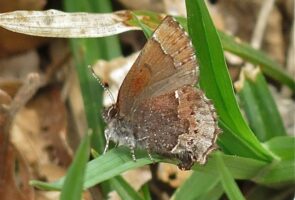 Henry’s Elfin
Henry’s Elfin
-
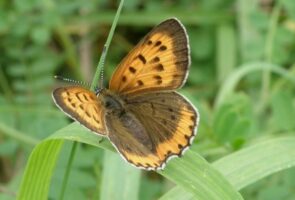 Bronze Copper
Bronze Copper
-
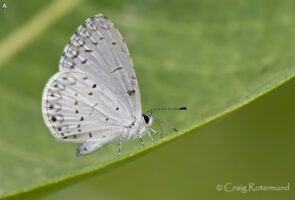 Summer Azure
Summer Azure
-
 Reakirt’s Blue
Reakirt’s Blue
-
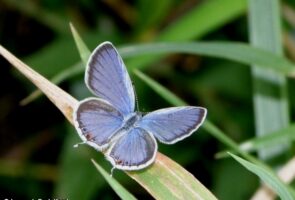 Eastern Tailed-Blue
Eastern Tailed-Blue
-
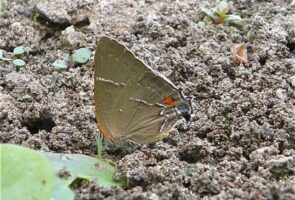 White M Hairstreak
White M Hairstreak
-
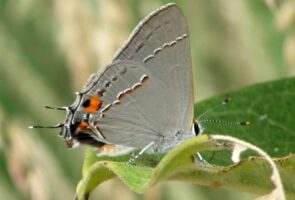 Gray Hairstreak
Gray Hairstreak
-
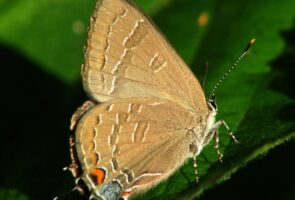 Banded Hairstreak
Banded Hairstreak
-
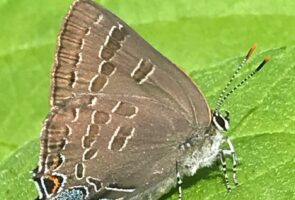 HICKORY HAIRSTREAK
HICKORY HAIRSTREAK
-
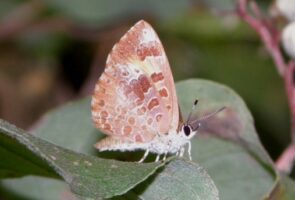 Harvester
Harvester
